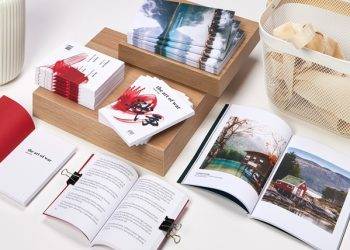It is not an easy task to design a deck of tarot cards that is both aesthetically pleasing and intellectually engaging. One of the most challenging and time-consuming creative endeavors that an artist or designer will ever attempt is the production of a deck of playing cards (pun intended). This book will teach you all you need to know about producing a tarot deck, regardless of whether you have ever manufactured playing cards before or are an experienced professional. With the help of the following pointers, you should have no trouble locating the most reputable playing cards manufacturer.
Identify the qualities that set your cards apart.
In creating a tarot deck, it is crucial to create clear visual boundaries. A large selection of tarot and oracle card decks covering many topics and styles are readily accessible. Card decks may be found in a wide variety of formats (Tarot, Lenormand), but each one has its unique feel and design due to the artist’s interpretation of the structure. Many artists, however, are finding great success by simply reimagining the classic Rider-Waite deck now that it is in the public domain.
Ideas for a new tarot deck can originate from anywhere, be it a gap in the market that needs to be filled, a flash of insight into a previously unconsidered avenue, or a refreshing twist on some old favorites.
Learn as much as you can
It is essential that before you begin production on your tarot deck, you conduct research into the market, your competitors, and potential buyers to learn about their experiences with existing decks, how they are being used, the price point, and anything else that can shed light on the need for your tarot deck. This will allow you to determine whether or not there is a market for your tarot deck.
Let’s begin by discussing the competition. The market for tarot cards like the ones you want to make is how competitive? Are there a lot of manufacturers making products with similar concepts? Due to the artwork being in the public domain, various Rider-Waite-themed decks have entered the market, with varying degrees of success based on the unique qualities they provide.
In a market with many established players, new entrants may find it challenging to get a foothold. Although potential customers may not be interested in something wholly novel, they can be intrigued by a novel take on an established idea.
Whatever the situation may be, this is where input from consumers is most helpful. Analyses of alternative tarot card sets might provide insight into customer sentiment, characteristics liked/disliked, and ways to enhance the product. It’s a fantastic approach to identifying market gaps and opportunities.
Master the art of self-promotion.
Professional tarot readers, psychics, and mystics who utilize tarot cards on a regular basis may find that creating their own custom decks of cards is a fun creative outlet and a potential source of additional revenue for their businesses.
How much room do you see for deck design in your current company plan? When doing readings, how can you guarantee that your deck is the one that is being used and not someone else’s? Having your tarot deck read on Oranum and similar sites might increase its exposure.
Recognize your driving forces.
If you already know exactly how you want your deck of cards to look and feel, you can skip this section. But don’t worry if you don’t know just yet. Making your own deck of playing cards usually starts with some offhand thought or niche hobby. Just thinking about the things you like doing, reading, and discovering—even if they seem bizarre at first—can lead to many ideas for card decks. Here are a few instances of this pattern.
Most works are protected by copyright for 95 years from their publication date (in the USA). Because of this, Disney’s Alice in Wonderland is off-limits to the public until the year 2046. (assuming Disney takes no action on the copyright, which is unlikely). Despite Disney’s creative adaptation of Lewis Carroll’s Alice in Wonderland, Disney has no legal claim to the property beyond the work itself, which was published in 1865. The book Alice in Wonderland has really been available to the general public since 1960.












